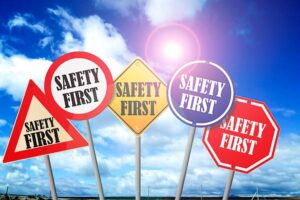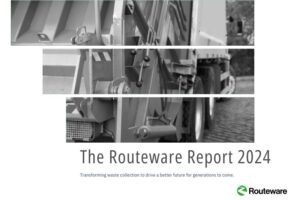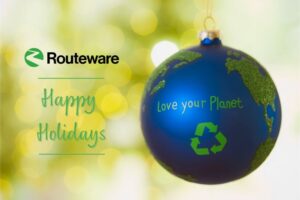Increase Your Reach: Tips to Engage All Demographics With Your Waste Education
Effective communication yields successful programming, and effective communication is all about making real connections with the people you serve — no matter their age, the language they speak, or the place they call home.
Reaching and engaging with all demographics in your area, especially the people who may be harder to reach, is not only critical for the success of your programs; it’s the right thing to do. So how do you do it? From overcoming language barriers to leaning on digital tools from ReCollect, here are some things to keep in mind and tips to get you started.
1. Assess.
Consider the demographics of the people you serve, and continuously adapt your communication approaches to reach them. For example, three demographics that may require a little more effort to connect with include those who speak English as a second language (or not at all), senior citizens and others who do not always use or have access to technology, and temporary residents such as tenants and travelers.
-
- English Language Learners
50% of U.S. residents are classified as “multicultural.” Meet the needs of the people in your community, no matter their background, by rethinking language and creating and revamping programs to be relevant, inclusive and culturally competent. - An Aging Population
As time passes, the people we work with are not only becoming more diverse, but they’re aging, too. Today, 16% of the U.S. population is 65 or older, which is 1 in every 7 Americans. This creates demand for waste management communications that reflect an aging population. - Visitors and Temporary Residents
Today, we are more mobile and environmentally conscious than ever before. In fact, 43 million people in the U.S. who travel consider themselves to be “ecologically concerned.” This means that they recycle at home and want to continue their efforts when they’re traveling, too.
- English Language Learners
These three demographics make up a good portion of our communities, and we want to be sure they do not miss our education and outreach efforts. As the people we serve change, so, too, must our communication strategies and program offerings.
2. Adapt.
Once you understand the makeup of your community, prepare to meet them where they are. Consider how the people you serve wish to receive and digest information and adapt your efforts accordingly.
-
- Address language barriers.
Learn more about common languages in your area. Does your organization offer translation services? If so, what solid waste education and promotional collateral do you translate?
At ReCollect, our digital communication tools include 15 languages: English, French, Spanish, Korean, Khmer, Simplified Chinese, Hatian Creole, Hungarian, Japanese, Portuguese, Punjabi, German, Czech, Russian and Vietnamese. Users simply select their preferred language, and the tools remember that selection. Our app automatically detects the preferred language, so it’s completely seamless.
-
- Meet people where they are.
To reach the older or aging people in your community, keep it simple.
Make it easy for people to receive and understand the information they need.
- Meet people where they are.
This might look like providing reminders by phone as well as email and text, and allowing digital collection calendars to be printed so folks may hang them up for reference. (Our data shows that senior citizens definitely adopt our digital tools, so don’t assume that they won’t!)
-
- Make sure your communications are accessible. For instance, we are annually audited by a third-party organization to confirm our compliance with Web Content Accessibility Guidelines (WCAG AA 2.1) with our web tools and mobile app.
3. Formulate your outreach and engagement plan.
Once you have a handle on your community’s demographics and some strategies to create inclusive communications, tap into your resources.
-
- Engage with multicultural media partners, including newspapers, radio and TV stations.
- Form partnerships with community leaders.
- Centralize and localize web and app content to make it easy to find.
- Ensure messaging reaches visitors, new community members and more. Does your organization have a dedicated resource that works directly with these groups? What do the services you offer look like for these groups? Can people easily find waste information they need on your website?
For instance, pizza boxes may be discarded into recycling, compost or trash, depending on your location and regulations. Using a tool such as the Waste Wizard, you can help people self-serve to find the disposal information they need, no matter where they are.
-
- Leverage technology to promote and educate people about your programs.
- Cross-promote your waste and recycling information on your partners’ websites — and embed ReCollect tools there, too.
4. Be flexible and make it happen.
In Avon, Colorado, Walking Mountains Science Center Sustainability Programs Manager Nina Waysdorf says the area features some 55,000 full-time residents, plus a “huge” transient group of seasonal tenants and tourists from all over the world. In addition, some 25% of the population there speaks Spanish.
From presentations, zero-waste events, social media posts and beyond, Waysdorf says she and her team work hard to create inclusive programming. Recycling tours and materials are offered in Spanish, and translations are not only technically accurate, but also culturally relevant to their community, she says.
While there is no feasible way to translate waste and recycling information to every language spoken in the county, Waysdorf says they have found that pictures are an incredibly helpful tool to reach people no matter the language they speak.
Overall, Waysdorf says tapping into any and all forms of communication can yield a higher chance of finding something that resonates with the community.
Are you struggling to engage harder-to-reach demographics in your area? Check out our webinar on the topic today.





